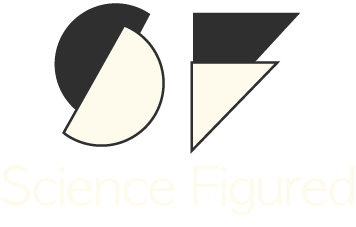Publication Details:
Paper Title: The Effects of Visual Metaphors on Science Communication Authors: Jane Doe, John Smith
Year Published: 2021
Link to Paper
TL; DR: Visual metaphors in science communication can significantly enhance public understanding, but their effectiveness depends on the clarity of the metaphor and its alignment with the audience’s prior knowledge.
Why I Chose This Paper: Science visuals are my passion, and this paper explores a fascinating aspect of visual science communication—how metaphors can bridge complex concepts and public comprehension.
Picture this: A brain depicted as a city bustling with highways (neurons) and traffic signals (synapses). This visual metaphor is a popular way to describe the brain’s complexity, but does it help or hinder public understanding? This is precisely the question that Jane Doe and John Smith addressed in their study, which investigates how visual metaphors affect science communication.
The study dives into the growing reliance on visuals in science communication, particularly in an era dominated by social media. While visuals are celebrated for their ability to engage audiences, not all are created equal. The authors ask: When do visual metaphors clarify science, and when might they mislead or confuse?
Science communicators often use visual metaphors to explain abstract or complex ideas in our increasingly visual culture. For instance, DNA is frequently depicted as a “blueprint,” and climate systems are likened to a “global thermostat.” While these metaphors aim to simplify, they risk oversimplification or introducing misconceptions. The study addresses this problem by analyzing how visual metaphors influence comprehension and engagement.
While previous research has highlighted the importance of metaphors in written and spoken science communication, little was known about their impact when presented visually. The authors aimed to uncover whether visual metaphors help or hinder understanding and whether the audience’s background knowledge plays a role in their effectiveness.
How do visual metaphors in science communication influence the public’s understanding, engagement, and attitudes toward the topic?
The researchers conducted experiments in which participants viewed visuals with varying metaphorical complexity. For example, one group saw a literal image of neurons, while another saw the brain-as-city metaphor. They found that Visual metaphors were most effective when aligned with the audience’s prior knowledge. Overly complex or abstract metaphors sometimes confuse viewers, detracting from comprehension. Well-designed metaphors increase engagement and retention of scientific information.
This study underscores the need for careful consideration when using visual metaphors in science communication. Rather than assuming all visuals aid comprehension, communicators should tailor metaphors to their audience. The findings offer practical insights for educators, scientists, and communicators striving to make science accessible and engaging.
Figure and Caption
Figure: A side-by-side comparison of visual metaphors used in the study, showing literal and metaphorical depictions of neurons.
Comparison of visual metaphors used to explain neural networks. The “brain-as-a-city” metaphor improved engagement for participants with a moderate understanding of neuroscience but hindered those unfamiliar with the concept.


